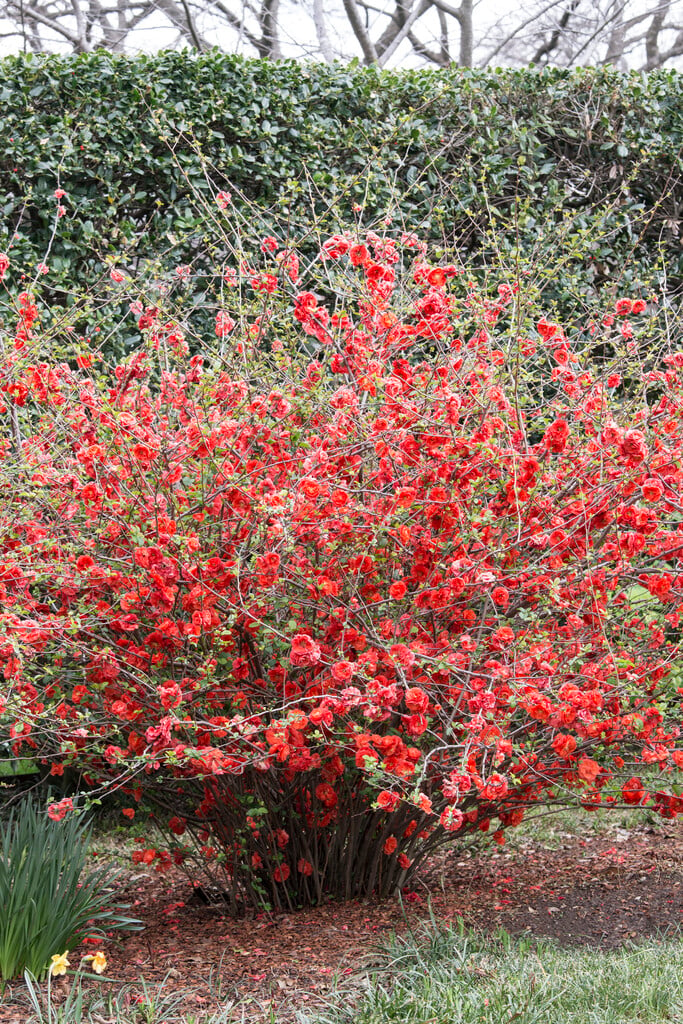Chaenomeles japonica
Japanese quince
A spreading, thorny deciduous shrub to 1m in height and 2m wide, with rounded, glossy mid-green leaves to 5cm long. Profuse clusters of red to orange, cup-shaped flowers to 4cm across are produced in spring, followed by aromatic yellow or yellow-flushed red fruits in autumn. These can be used to make jams and jellies but please see notes on toxicity for further advice
Other common names
Maule's quinceSize
Ultimate height
0.5–1 metresTime to ultimate height
5–10 yearsUltimate spread
1.5–2.5 metresGrowing conditions
Moisture
Moist but well–drained, Well–drainedpH
Acid, Alkaline, NeutralColour & scent
| Stem | Flower | Foliage | Fruit | |
| Spring | Orange Red | Green | ||
|---|---|---|---|---|
| Summer | Green | |||
| Autumn | Green | Yellow Red | ||
| Winter |
Position
- Full sun
- Partial shade
Aspect
South–facing or North–facing or East–facing or West–facing
Exposure
Exposed or Sheltered Hardiness
H6Botanical details
- Family
- Rosaceae
- Native to GB / Ireland
- No
- Foliage
- Deciduous
- Habit
- Bushy, Spreading branched
- Potentially harmful
- Seeds contain toxins so these should be removed if you are considering eating the fruit, usually grown as an ornamental shrub. Pets: Fruit are ornamental - not to be eaten - see the HTA guide to potentially harmful plants for further information and useful contact numbers
- Genus
Chaenomeles are deciduous, usually spiny shrubs with simple leaves and cup-shaped, 5-petalled flowers, solitary or clustered, in spring, followed by edible often fragrant green or yellow fruits
- Name status
Correct
- Plant range
- Japan
How to grow
Cultivation
Grow in full sun or part shade in well-drained soil, lime tolerant but may become chlorotic on very alkaline soils
Propagation
Propagate by semi-ripe cuttings in summer or layering in autumn
Suggested planting locations and garden types
- Cottage and informal garden
- Wildlife gardens
- Flower borders and beds
- Hedging and screens
- Edible fruit
Pruning
Pests
May be susceptible to scale insects, brown scale and aphids
Diseases
May be susceptible to fireblight, blossom wilt, brown rot and honey fungus (rarely)
Love gardening
Sign up to receive regular gardening tips, inspiration, offers and more
View our Privacy Policy
Get involved
The Royal Horticultural Society is the UK’s leading gardening charity. We aim to enrich everyone’s life through plants, and make the UK a greener and more beautiful place.

